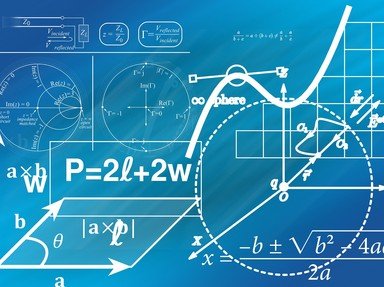Quiz Answer Key and Fun Facts
1. The famous Euler's number is also known as Napier's constant. A typical scientific calculator displays the numerical value of this mathematical constant up to 10 significant figures, namely 2.718281828. This figure is misleading because Euler's number is actually an IRRATIONAL number.
2. Euler's number is denoted by the letter e. It is named after the Swiss mathematician, Leonhard Euler. This mathematical constant is also the base of the natural logarithm, as in log base e. Which of the following is the alternative notation for log base e?
3. Jacob Bernoulli, a Swiss mathematician defined Euler's number as the numerical value of the limit of (1 + 1/n)^n when n approaches infinity. In calculus, the definition of Euler's number is derived from the natural logarithm function. It states that e is simply the number such that log base e of the number e equals to what number?
4. The numerical value of e can be expressed in the following series: 1 + 1/1! + 1/2! + 1/3! + ... What is the name of this series?
5. Euler's number appears in Euler's equation, namely e^(i@) = cos@ + i x sin@, where i is the imaginary number (square root of -1) and @ is theta. Which of the following is the resulting Euler's identity if you substitute @ = pi (3.142...) into the original Euler's equation? (Hint: sin pi = 0 and cos pi = -1)
6. The Euler's constant, or the Euler-Mascheroni constant refers to the number 0.57721... It is used widely in the field of number theory and mathematical analysis. Which lowercase Greek letter denotes this Euler's constant?
7. The formal definition of the Euler's constant is given by the difference between a series (1/1 + 1/2 + 1/3 + ...+ 1/n) and the natural logarithm as n approaches infinity. What is the name of the series?
8. Which English mathematician, who was the mentor of the celebrated Indian mathematician, Srinivasa Ramanujan and also the author of the essay "A Mathematician's Apology" offered his position as the Savilian Professor of Geometry at the University of Oxford, England to anyone who could prove that the Euler's constant is irrational?
9. The famous definite integral of the function e^(-x) times (ln x)^2 with respect to x from 0 to infinity gives a value of 1.97811..., which is also equivalent to a^2 + (b^2)/6, where a and b are two distinct mathematical constants. What are a and b?
10. Let x = Euler's number (2.718...) and y = Euler's constant (0.5772...). The constant x^y is a very important mathematical constant that is used in the field of number theory. The value of x^y is closest to which of the following integers?
Source: Author
Matthew_07
This quiz was reviewed by FunTrivia editor
crisw before going online.
Any errors found in FunTrivia content are routinely corrected through our feedback system.

